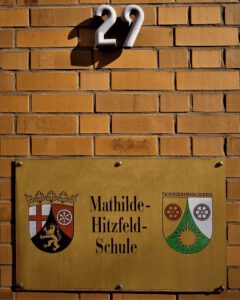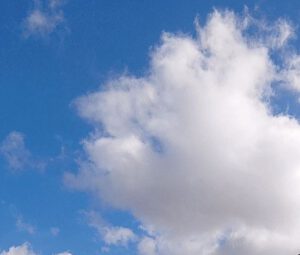Now there can be questions about the . Let us find out whether Al2S3 is salt or not. This occurs when the atoms participating in the bond are the same. The Octet Rule. Al2O3 is covalent because it contains oxygen atoms, which share electrons with aluminum atoms to form covalent bonds. The bond triangle shows that chemical bonds are not just particular bonds of a specific type. Also, by applying the octet rule find out whether Al and S atoms complete their octet or not. By the way, this is a neat way to "polish" silver that is tarnished with black silver sulfide. Sodium donates the electron and becomes positively charged. In metals, the outermost shells of the atoms overlap with each other. I'm not familiar with any exceptions like that. This liquid can be colorless as well. Holleman, A. F.; Wiberg, E. "Inorganic Chemistry" Academic Press: San Diego, 2001. Phosphorus trichloride with a chemical formula PCl3 is a yellow fuming liquid. Instead, it tends to share the 4 electrons with the adjacent atoms. The cooled product is very hard. PH3 or phosphine is a compound of phosphorus that is classified under pnictogen hydride. A. A: The polarity of the molecules categorized them into polar and non-polar molecule. Chemical bond A chemical bond is a lasting attraction between atoms, ions or molecules that enables the formation of chemical compounds. Al2S3 + 6H2O 2Al(OH)3 + 3H2S calculate the number of excess reagent units remaining when 4 Al2S3 formula units and 30 H2O molecules react? and electronegativity difference on y-axis, \[\Delta \chi = | \chi_A - \chi_B | \label{diff}\]. Hence, each carbon atom is covalently bonded to the neighbouring 4 other carbon atoms. In this article, we are going to study PH3 lewis structure and various facts about it. The solubility of any compound depends upon the ability of that solute to dissolve in the solvents like water or any other. MgCl 2. This creates a strong electrostatic attraction between the two atoms. Al2S3 molecule is made up of 2 metallic aluminium (Al) and three non-metallic Sulphur (S) atoms. D W i n g d i n g s R o m a n l l 0 @ . All the molecules of aluminium and sulphur are arranged closely. The type of bonding that you will observe in the structure in an atom of Al2S3 is called covalent bonding. A polar covalent bond is formed when the difference in electronegativity between the atoms to be bonded together lies within the range of 0.5 and 1.9. ; An ionic bond is also known as an electrovalent bond. Aluminium sulfide has an ionic bond but some authors consider this bond as polar covalent. Lewis structure formal charge is calculated using the formula which includes no. A. double-replacement B. combustion C. single-replacement D. decomposition C? (Answered 2023), How Do I Make Frozen Fries From Checkers? Because of the Sulfer's ability to donate a pair of electrons to one of the Aluminum's at a given time, the compound gives the appearance that all bonds in the compound are covalent double bonds, although one bond will always be a single bond at any given time. When two atoms of slightly differing electronegativities come together to form a covalent bond, one atom attracts the electrons more than the other; this is called a polar covalent bond. Hybridization = no. Aluminum sulfide (Al2S3) | Al2S3 - PubChem Apologies, we are having some trouble retrieving data from our servers. Ionic bonding involves a transfer of an electron. The Products are silver and aluminum sulfide. However, simple ionic and covalent bonding are idealized concepts and most bonds exist on a two-dimensional continuum described by the van Arkel-Ketelaar Triangle (Figure \(\PageIndex{1}\)). As aluminium is less electronegative than sulphur atoms thus electron clouds are attracted toward more electronegative sulphur atoms. The ionic bond is formed by a central aluminium atom with two sulphur atoms due to the loss of 3 electrons. Using Equations \ref{sum} and \ref{diff}: \[\begin{align*} \sum \chi &= \dfrac{\chi_A + \chi_B}{2} \\[4pt] &=\dfrac{2.18 + 2.22}{2} \\[4pt] &= 2.2 \end{align*}\], \[\begin{align*} \Delta \chi &= \chi_A - \chi_B \\[4pt] &= 2.18 - 2.22 \\[4pt] &= 0.04 \end{align*}\], \[\begin{align*} \sum \chi &= \dfrac{\chi_A + \chi_B}{2} \\[4pt] &=\dfrac{0.95 + 0.98}{2} \\[4pt] &= 0.965 \end{align*}\], \[\begin{align*} \Delta \chi &= \chi_A - \chi_B \\[4pt] &= 0.98 - 0.95 \\[4pt] &= 0.025 \end{align*}\], \[\begin{align*} \sum \chi &= \dfrac{\chi_A + \chi_B}{2} \\[4pt] &=\dfrac{0.82 + 3.98}{2} \\[4pt] &= 2.4 \end{align*}\], \[\begin{align*} \Delta \chi &= \chi_A - \chi_B \\[4pt] &= | 0.82 - 3.98 | \\[4pt] &= 3.16 \end{align*}\]. Currently, I am working with Lambdageek as a Subject Matter Expert. Bonding in Al2O3 is created by the sharing of electrons between atoms. B)P4 + 5O2 -> P4O10 This reaction is, 1. Nonpolar covalent bond and. WebStorm. Aluminum sulfide or aluminium sulphide is a chemical compound with the formula Al2S3. (ii) write a simple ionic equation to represent, Draw Bohr diagrams of 2 hyrdogen atoms bonding with an oxygen atom by sharing electrons to, A. noble gases B. metals and non-metals C. non-metals only D. metals only. This colorless species has an interesting structural chemistry, existing in several forms. Alcl3 [Alcl3] Aluminium . The periodic table shows the basic building blocks for everything we see around us . CaBr 2. Municipal bonds are probably the most common type of nontaxable investment. This transfer of electrons leads to the formation of two oppositely charged ions. S-S; S-H; S-K. View Answer. Chem. Legal. There are five main types of bonds: Treasury, savings, agency, municipal, and corporate. oxidation-reduction condensation single-replacement double-replacement, https://www.google.com/search?q=polishing+silver+aluminum. Synthesis**** Decomposition Single Replacement Double Replacement Combustion 9. Exchanging electrons between the two as in an ionic bond would have two Al atoms giving up 6 valence electrons total (3 from each) and the 3 S atoms receiving 6 valence electrons total (2 each) which is consistent with an ionic interaction. As we learn more about taking care of our hair between salon appointments, the EVERLASTING.COLOUR at-home bond building treatment is a must. Join us on Thursday, January 19th at 7 PM EST as we speak with Rachel Perez, DMD, about dentistry and her dental practice! Is Al2S3 an ionic or molecular compound? Search The bond issuer takes on the debt, and the person that buys the debt, the bondholder, is the one providing funds. of this 3Ag2S + 2Al 6Ag + Al2S3. 1969Gau/Gil:3969-3972. Question = Is IF4-polar or nonpolar ? More than six crystalline forms of aluminum sulfide are known and only some are listed below. In this case, the hydrogen bonding evidently "wins". This reaction is extremely exothermic and it is not necessary or desirable to heat the whole mass of the sulfur-aluminum mixture; (except possibly for very small amounts of reactants). This difference in the charges contained by the ion and the electrons establishes a force of attraction that binds the two and keeps the metallic structure stable. You can ask a new question or browse more Chemistry questions. CHEM 3110: Descriptive Inorganic Chemistry, { "3.01:_Types_of_Bonding" : "property get [Map MindTouch.Deki.Logic.ExtensionProcessorQueryProvider+<>c__DisplayClass228_0.b__1]()", "3.02:_Electronegativity_Values" : "property get [Map MindTouch.Deki.Logic.ExtensionProcessorQueryProvider+<>c__DisplayClass228_0.b__1]()", "3.03:_Lewis_Electron-Dot_Diagrams" : "property get [Map MindTouch.Deki.Logic.ExtensionProcessorQueryProvider+<>c__DisplayClass228_0.b__1]()", "3.04:_Valence-Shell_Electron-Repulsion_Theory" : "property get [Map MindTouch.Deki.Logic.ExtensionProcessorQueryProvider+<>c__DisplayClass228_0.b__1]()", "3.05:_Molecular_Polarity" : "property get [Map MindTouch.Deki.Logic.ExtensionProcessorQueryProvider+<>c__DisplayClass228_0.b__1]()", "3.06:_Valence_Bond_Theory" : "property get [Map MindTouch.Deki.Logic.ExtensionProcessorQueryProvider+<>c__DisplayClass228_0.b__1]()", "3.07:_Molecular_Orbital_Theory" : "property get [Map MindTouch.Deki.Logic.ExtensionProcessorQueryProvider+<>c__DisplayClass228_0.b__1]()" }, { "00:_Front_Matter" : "property get [Map MindTouch.Deki.Logic.ExtensionProcessorQueryProvider+<>c__DisplayClass228_0.b__1]()", "01:_Introduction_to_Inorganic_Chemistry" : "property get [Map MindTouch.Deki.Logic.ExtensionProcessorQueryProvider+<>c__DisplayClass228_0.b__1]()", "02:_Atomic_Theory" : "property get [Map MindTouch.Deki.Logic.ExtensionProcessorQueryProvider+<>c__DisplayClass228_0.b__1]()", "03:_Bonding_Theories" : "property get [Map MindTouch.Deki.Logic.ExtensionProcessorQueryProvider+<>c__DisplayClass228_0.b__1]()", "04:_Molecular_Symmetry_and_Point_Groups" : "property get [Map MindTouch.Deki.Logic.ExtensionProcessorQueryProvider+<>c__DisplayClass228_0.b__1]()", "05:_Structure_and_Energetics_of_Solids" : "property get [Map MindTouch.Deki.Logic.ExtensionProcessorQueryProvider+<>c__DisplayClass228_0.b__1]()", "06:_Acid-Base_and_Donor-Acceptor_Chemistry" : "property get [Map MindTouch.Deki.Logic.ExtensionProcessorQueryProvider+<>c__DisplayClass228_0.b__1]()", "07:_Reduction_and_Oxidation_Chemistry" : "property get [Map MindTouch.Deki.Logic.ExtensionProcessorQueryProvider+<>c__DisplayClass228_0.b__1]()", "08:_Coordination_Chemistry-_Structure_and_Isomers" : "property get [Map MindTouch.Deki.Logic.ExtensionProcessorQueryProvider+<>c__DisplayClass228_0.b__1]()", "09:_Coordination_Chemistry-_Bonding" : "property get [Map MindTouch.Deki.Logic.ExtensionProcessorQueryProvider+<>c__DisplayClass228_0.b__1]()", "10:_Coordination_Chemistry-_Reactions_and_Mechanisms" : "property get [Map MindTouch.Deki.Logic.ExtensionProcessorQueryProvider+<>c__DisplayClass228_0.b__1]()", "11:_Organometallic_Chemistry" : "property get [Map MindTouch.Deki.Logic.ExtensionProcessorQueryProvider+<>c__DisplayClass228_0.b__1]()", "12:_Bioinorganic_Chemistry" : "property get [Map MindTouch.Deki.Logic.ExtensionProcessorQueryProvider+<>c__DisplayClass228_0.b__1]()", "zz:_Back_Matter" : "property get [Map MindTouch.Deki.Logic.ExtensionProcessorQueryProvider+<>c__DisplayClass228_0.b__1]()" }, [ "article:topic", "metallic bonding", "authorname:delmar", "ionic bonding", "Covalent Bonding", "showtoc:no", "license:ccbyncsa", "transcluded:yes", "source[1]-chem-96758", "autonumheader:yes", "source[2]-chem-1989", "source[3]-chem-96758", "source[31]-chem-296257", "Bonding triangle", "citationstyle:acs" ], https://chem.libretexts.org/@app/auth/3/login?returnto=https%3A%2F%2Fchem.libretexts.org%2FCourses%2FEast_Tennessee_State_University%2FCHEM_3110%253A_Descriptive_Inorganic_Chemistry%2F03%253A_Bonding_Theories%2F3.01%253A_Types_of_Bonding, \( \newcommand{\vecs}[1]{\overset { \scriptstyle \rightharpoonup} {\mathbf{#1}}}\) \( \newcommand{\vecd}[1]{\overset{-\!-\!\rightharpoonup}{\vphantom{a}\smash{#1}}} \)\(\newcommand{\id}{\mathrm{id}}\) \( \newcommand{\Span}{\mathrm{span}}\) \( \newcommand{\kernel}{\mathrm{null}\,}\) \( \newcommand{\range}{\mathrm{range}\,}\) \( \newcommand{\RealPart}{\mathrm{Re}}\) \( \newcommand{\ImaginaryPart}{\mathrm{Im}}\) \( \newcommand{\Argument}{\mathrm{Arg}}\) \( \newcommand{\norm}[1]{\| #1 \|}\) \( \newcommand{\inner}[2]{\langle #1, #2 \rangle}\) \( \newcommand{\Span}{\mathrm{span}}\) \(\newcommand{\id}{\mathrm{id}}\) \( \newcommand{\Span}{\mathrm{span}}\) \( \newcommand{\kernel}{\mathrm{null}\,}\) \( \newcommand{\range}{\mathrm{range}\,}\) \( \newcommand{\RealPart}{\mathrm{Re}}\) \( \newcommand{\ImaginaryPart}{\mathrm{Im}}\) \( \newcommand{\Argument}{\mathrm{Arg}}\) \( \newcommand{\norm}[1]{\| #1 \|}\) \( \newcommand{\inner}[2]{\langle #1, #2 \rangle}\) \( \newcommand{\Span}{\mathrm{span}}\)\(\newcommand{\AA}{\unicode[.8,0]{x212B}}\), status page at https://status.libretexts.org. Ionic Bond. Answer = SCl6 is Polar What is polarand non-polar? What will the formula for the ionic compound formed from. Let us see whether Al2S3 is solid or not. Question = Is phosphorus triodide ( PI3 ) polar or nonpolar ? a. And since that much heat is needed to form the bonds in Al2S3, that much heat is needed to break the bond. 2Al + 3S Al2S3 Reaction Information Word Equation Aluminium + Sulfur = Aluminium Sulphide Two moles of Aluminium [Al] and three moles of Sulfur [S] react to form one mole of Aluminium Sulphide [Al2S3] Show Structural Image Reaction Type Synthesis Redox Redox (Oxidation-Reduction) Reaction Al + S = Al2S3 might be a redox reaction. It has a strong ionic bond in the Al2S3 molecule. https://en.wikipedia.org/wiki/Covalent_bond. In this case, it acts as a base. Draw the Lewis structure for the compound. My area of specialization is Inorganic Chemistry. e. Hydrogen bonding and London dispersion forces are at cross purposes here. Looking at it initially I was inclined to agree with the answer given but after doing a double take at the empirical formula it looks ionic. A. CO2 B. H2O2 A non-metal, KZ and then answer the questions that follow: A non-metal element which lies in the third row of the Periodic Table forms a gaseous compound H2Y with hydrogen and the compound Li2Y with, A. It is formed by the reaction between Al metal and S non-metal. Products Lithium Nickel Manganese Cobalt Oxide. Predict whether each of the following bonds is expected to be covalent, polar covalent, or ionic. When dissolved in water decomposes and forms hydrogen sulphide (H2S). The number of electrons, which are negative, outnumber the number of protons by two on each sulfur resulting in a negative charge; and the number of protons, which are positive, outnumber the number of electrons by three on each aluminum. Intramolecular Forces are the forces that exist between the atoms of a molecule. It can itself get dissociated into Al3+ & S2 ions which carry electricity. PCl3 is a toxic liquid with an unpleasant smell. The LibreTexts libraries arePowered by NICE CXone Expertand are supported by the Department of Education Open Textbook Pilot Project, the UC Davis Office of the Provost, the UC Davis Library, the California State University Affordable Learning Solutions Program, and Merlot. Let us find out the lone pairs on Al2S3. Question: Is C2 2+a Paramagnetic or Diamagnetic ? Bonding is the interaction of different atoms to form compounds, molecules, ions, crystals, and all the other substances that make up the world. An ionic bond is a type of chemical bond that results from the electrostatic attraction between cations and anions. The freely moving electrons are responsible to form negatively charged electron clouds. The molar mass of this compound is 137.33 g/mol. Products Double Sides Lithium Iron Phosphate. What type of bond is the C-Cl bond in CCl4? Since all elements in the periodic table want to be like the noble gases and have their valence electron shell filled, Aluminum will share two electrons with one of the Sulfurs bound to it to produce a double covalent bond, and it will share one electron with another Sulfer to make another covalent bond. It distorts the electron cloud in O-2 ion and this gives a degree of covalent character to the compound. Polymer structures typically are long chains of covalently bonded carbon and hydrogen . And sodium sulfide is also non-molecular, ionic solid composed . polar covalent bond. In ionic bonding, electrons are donated by one atom and another atom receives them. Describe how you can tell if a polyatomic ion is present in a formula? Each type of bond has its own sellers, purposes, buyers, and levels of risk vs. return. Chemical Formulas Example: table salt: Sodium Chloride These electron pairs are known as shared pairs or bonding pairs, and the stable balance of attractive and repulsive forces between atoms, when they share electrons, is known as covalent bonding. But I am not sure, if it is covalent wouldn't it be polar too? The type of bond that forms from the sharing of electrons between the atoms of the table sugar is a covalent bond. The sodium ion has a +1 charge, whereas the hydroxide atom has a -1 charge. III Hydrogen bonding requires a molecule containing a large . There is one type of metal in Al2S3 and that is Al (aluminum). Ionic bonds require at least one electron Question = Is IF4-polar or nonpolar ? An ionic or electrovalent bond is a chemical bond produced between two atoms by the transfer of one or more electrons from an electropositive or metallic element to an electronegative or non-metallic element. Ionic bonds are electrostatic forces of attraction, that is, the attractive forces experienced between objects of opposite electrical charge (in this case, cations and anions). Al2O3 + 2NaOH 2NaAlO2 + H2O. Unlike Al2O3, in which the Al(III) centers occupy octahedral holes, the more expanded framework of Al2S3 stabilizes the Al(III) centers into one third of the tetrahedral holes of a hexagonally close-packed arrangement of the sulfide anions. Al2O3 is an ionic bond. Call Us: +1 (520)789-6673 Sign in or Create an Account. (One favors ethanol, the other favors hexane.) While aluminium is electropositive donates electrons to Al and acquires a positive charge. Starting from which group is considered to have close electronegativities to those of non-metals? A covalent bond exists due to the mutual sharing of electrons within the atoms. 3. Al2S3 does not act as salt. I recently reviewed that question and the only reason I can think of is that Al is sometimes (although rarely) considered a metalloid. Is calcium oxide an ionic or covalent bond ? Upon dissociation, Al2S3 ionizes intoAl3+and S2-ions and shows an ionic nature. https://www.google.com/search?q=polishing+silver+aluminum, What are the reactants and the products of this reaction? But Al2Cl6 have covalent bond only and there is no electron deficient bonding as depicted in the given structure. The charges being equal and opposite in nature establishes a strong bond between the two and leads to the formation of a new product with completely different characteristics. The substances which can donate proton is acids while the substance which accepts proton is base. Copyright 2023, LambdaGeeks.com | All rights Reserved, link to PH3 Lewis Structure: Drawings, Hybridization, Shape, Charges, Pair And Detailed Facts, link to Is SiF4 Polar or Nonpolar: Why, How, Lewis structure, Detailed Explanations, Valence electrons of Al atom = 3 X 2 (Al) = 6, Valence electrons of S atom = 6 x 3(S) = 18, Total number of valence electrons = 18+6 = 24, Hence total of 24 valence electrons are present in the Al. For a better experience, please enable JavaScript in your browser before proceeding. An ionic bond is formed by the complete transfer of valence electrons between the two atoms. Aluminum Oxide | Al2O3 - PubChem compound Summary Aluminum Oxide Cite Download Contents 1 Structures 2 Names and Identifiers 3 Chemical and Physical Properties 4 Related Records 5 Chemical Vendors 6 Drug and Medication Information 7 Food Additives and Ingredients 8 Pharmacology and Biochemistry 9 Use and Manufacturing 10 Identification Maybe that influences whether it's ionic or covalent. Propylammonium Iodide (PAI) Protein Array. The material is sensitive to moisture, hydrolyzing to hydrated aluminum oxides/hydroxides. Question = Is SiCl2F2polar or nonpolar ? What are bond-building treatments? Chemical Formulas A chemical formula tells us: - the type of atoms present - the number of atoms present - the type of compound 10. When in doubt, look at the valence electrons and try to make sense of it that way. Ed Vitz (Kutztown University), John W. Moore (UW-Madison), Justin Shorb (Hope College), Xavier Prat-Resina (University of Minnesota Rochester), Tim Wendorff, and Adam Hahn. And S2- ions go towards the anode due to oxidation reaction. The bottom side (from metallic to covalent) contains compounds with varying degree of directionality in the bond. Each sulfur molecule in Al2S3 wants to fill its valence electron shell to become more like the noble gases, and the addition of two extra electrons allows it to fill its valence electron shell. The polar nature of any compound depends upon the electronegativity difference between the atoms present in the molecule. [4] Compressing aluminum sulfide to 265 bar results in the phase where vacancies are arranged in a superlattice of tetragonal symmetry.[5]. Sodium hydroxide is formed as a result of an ionic bond that exists between a metal and a compound. This article would represent the chemistry behind considering the polarity of SiF4. It is an ionic compound, the bond between the aluminium and Sulphur atom is formed by sharing electrons with each other. The tendency of an atom to complete its octet becomes the basis of establishing a covalent bond amongst the atoms. Ex: Na gives 1 electron to Cl to form the ionic compound NaCl. (Answered 2023). however the Ba+2 ion has a a significant polarisation power to attract the electron cloud of the O-2 ion to a greater extend . In general chemistry we learned thatbonding between atoms can classified as range of possible bonding between ionic bonds (fully charge transfer) and covalent bonds (fully shared electrons).
Dancing Machine Gif,
Paul Hammersmith Ashworth Hospital, Merseyside,
Janet Evanovich Ghostwriter,
Ski Brand Stereotypes,
Articles W



